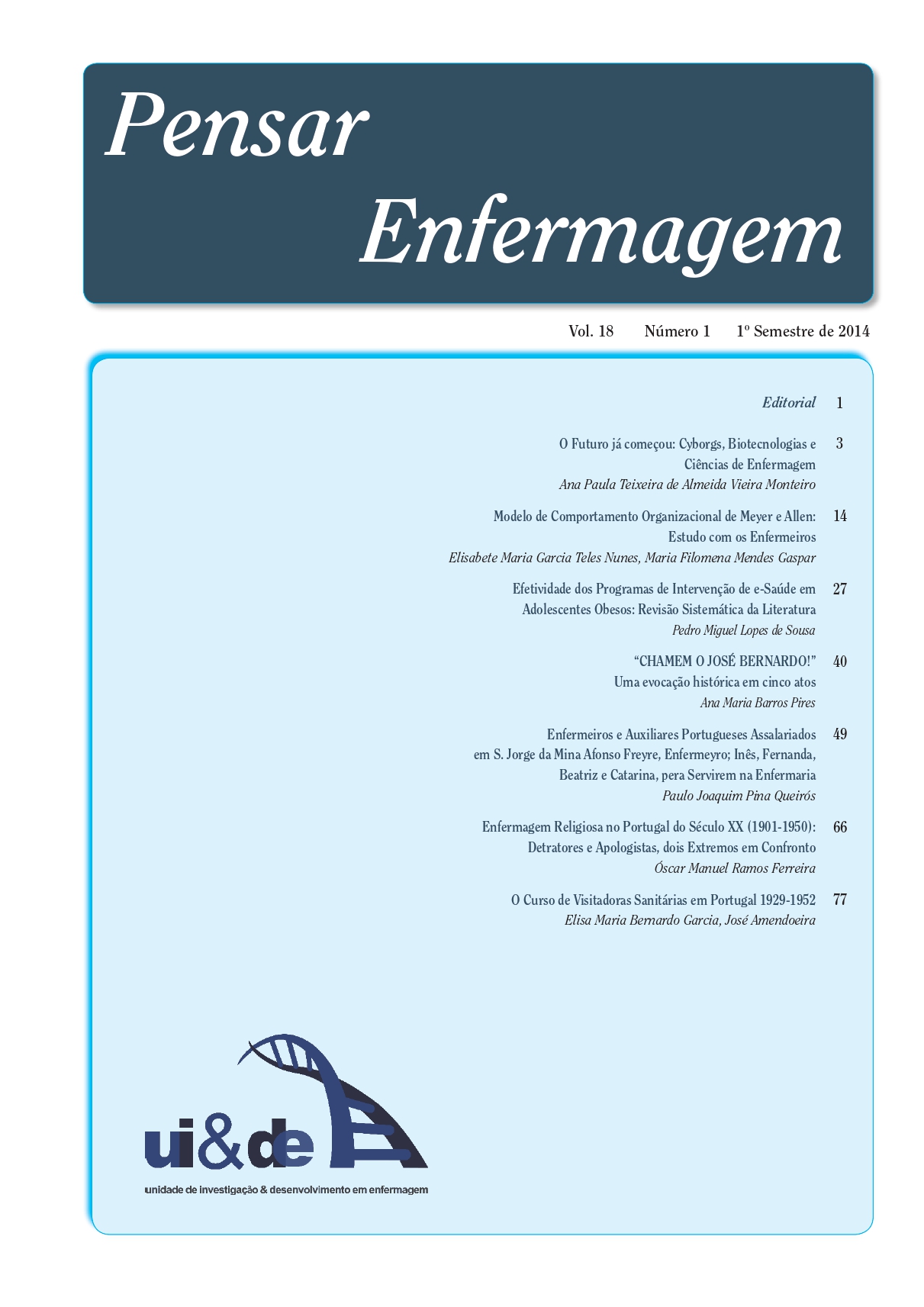Published 2014-10-01
Keywords
- Human resource management in hospitals,
- organisation and administration,
- motivation,
- nursing
How to Cite

This work is licensed under a Creative Commons Attribution 4.0 International License.
Abstract
In a past few years, health professionals have been confronted with considerable changes as a result of reforms and legislative changes in the sector. These changes called for more flexibility, better responsiveness to the patients’ needs and more rational costs, associated almost paradoxically to a requirement for quality improvement. In their daily practice, nurses are confronted with a fewer resources and greater pressure for profitability and production, leading to working conditions that fall short of your expectations and hinder the development of their potential. These situations certainly have repercussions in their relationship with the organisation. Meyer and Allen (1997, 1991) developed the “Three-Components Model “ that allow the measurement the affective, calculative and normative components of organisational commitment.
Objectives: The aim of this study was to analyse nurses’ organisational commitment and its relationship with sociodemographic variables, and analyse the relationships between the components of organisational commitment.
Method: It´s a quantitative, cross-sectional and analytical study. We surveyed a convenience sample of 161 nurses using the Organisational Commitment Scale developed by Meyer and Allen (1997). The statistical analysis was performed by IBM® SPSS® Statistics 19 package.
Results: All items are evaluated from a Likert scale of seven points, considering the cutoff value at 3,5. The results showed a median of 4,83, 4.57, and 3,66 to affective commitment, calculative commitment, and normative commitment respectively. There wasn’t
a statistically significant difference between sociodemographic characteristics and the components of organisational commitment. The affective commitment was positive correlated to normative commitment (r=0.569; p<0.001), and weakly correlated to calculative/ instrumental commitment, such as to calculative/instrumental commitment with normative commitment (r=0,299; p<0,001).
Conclusions: Nurses are lightly affective and calculative committed, and weakly normative committed. None of the independent variables were determinants of organisational commitment. It was not possible to verify the model proposed by the authors.

